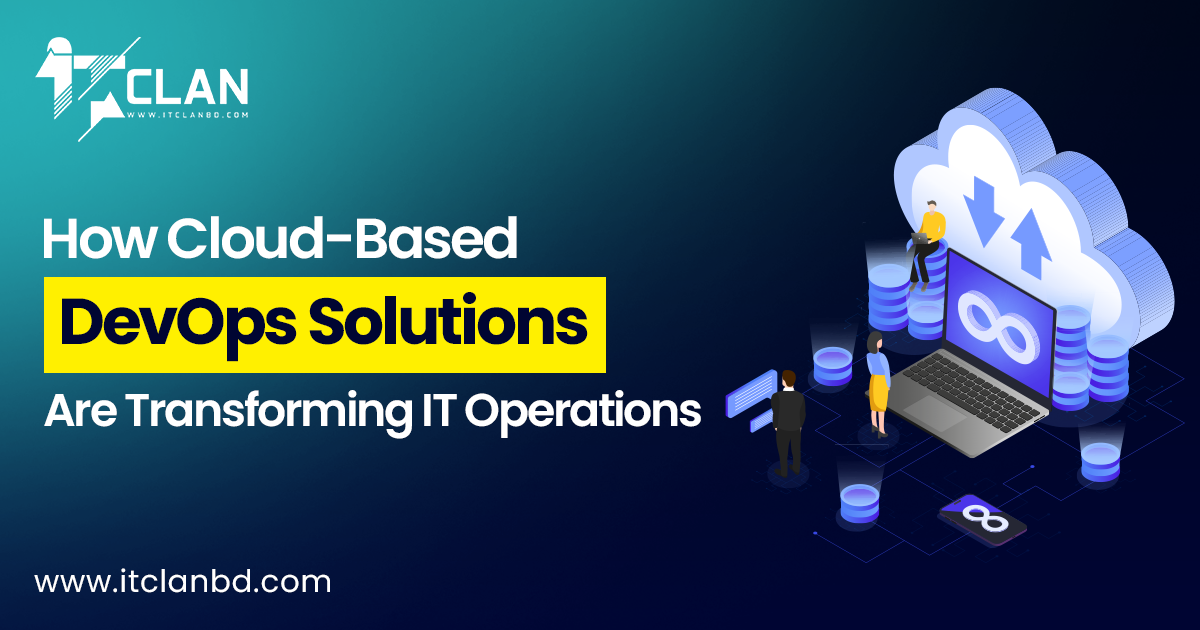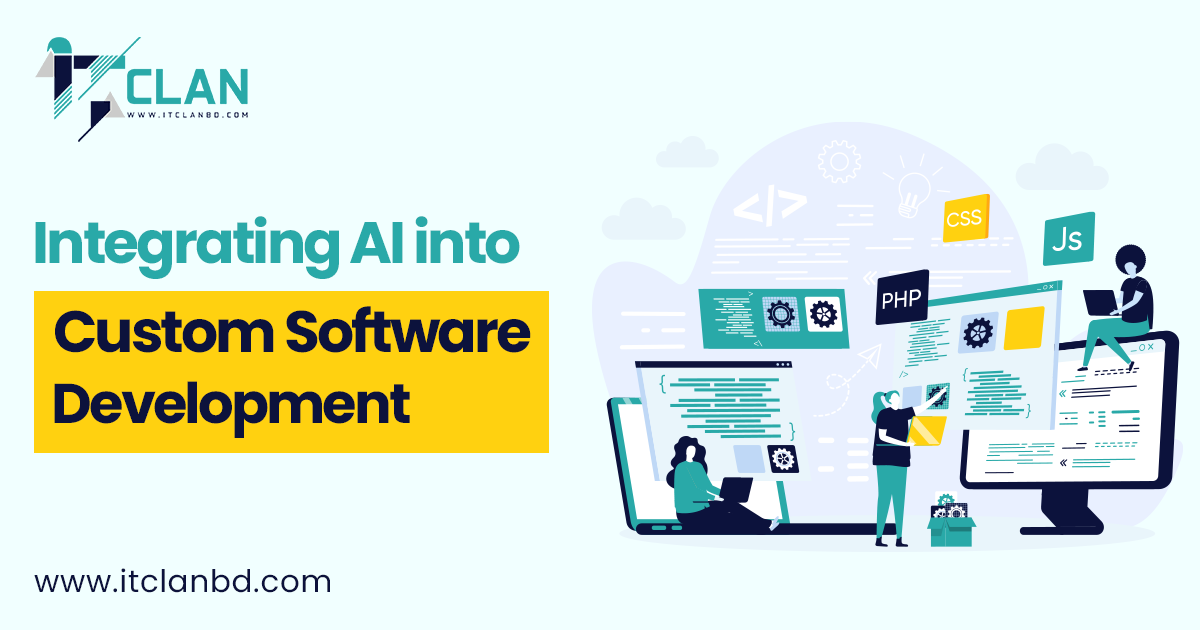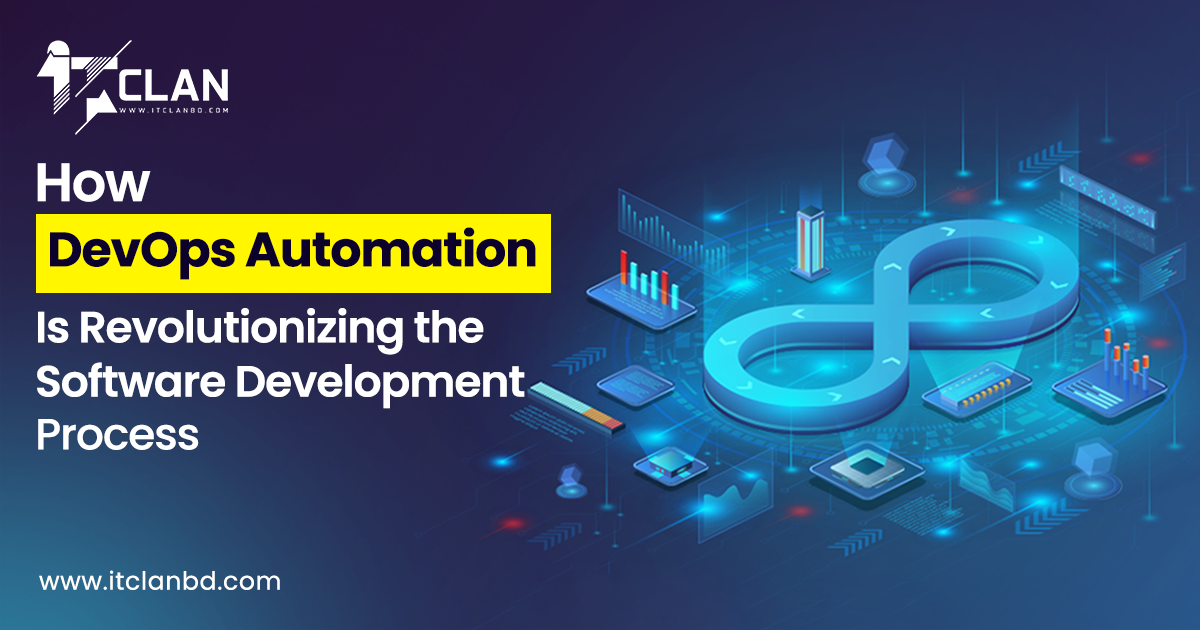
Our Blog Details
Home / Our Blog DetailsSoftware development has changed a lot in the past decade. Gone are the days when teams waited weeks or even months to release updates. Today, users expect fast updates, bug fixes, and new features—all without downtime.
So how are businesses keeping up with these high expectations? The answer is DevOps automation.
In this blog, we’ll break down what DevOps automation is, why it’s a game-changer, and how it’s completely transforming the software development process. We’ll keep it simple, casual, and straight to the point—so even if you’re not deeply technical, you’ll understand why this matters.
What Is DevOps Automation?
First, let’s get the basics right.
DevOps is a culture and set of practices that bring together development (Dev) and operations (Ops) teams. Instead of working in silos, both teams collaborate to deliver software faster and more reliably.
Now, add automation into the mix.
DevOps automation means using tools, scripts, and workflows to automate repetitive, manual tasks in the software development lifecycle.
For example:
- Instead of manually testing code, you set up automated test pipelines.
- Instead of manually deploying software updates, you use automated deployment tools.
- Instead of manually checking logs, monitoring tools send real-time alerts.
The goal? Faster releases, fewer mistakes, and happier teams.
Why DevOps Automation Matters in Today’s Software Development
You might wonder: “Can’t we just keep doing things manually?”
The short answer: not if you want to stay competitive.
Here’s why DevOps automation matters:
- Speed – Users expect quick updates. Automation allows faster delivery cycles.
- Collaboration – Dev and Ops teams work seamlessly without finger-pointing.
- Reliability – Automation reduces human errors and makes processes more predictable.
- Scalability – As projects grow, manual processes simply can’t keep up.
Think of it like this: Would you rather wash your clothes by hand every day or use a washing machine? That’s the difference automation makes in DevOps.
How DevOps Automation is Improving The Software Development Process
1. Continuous Integration and Continuous Delivery (CI/CD)
This is the backbone of DevOps automation.
- Continuous Integration (CI): Developers frequently merge code changes into a shared repository. Automated builds and tests run instantly to catch errors early.
- Continuous Delivery (CD): Once the code passes tests, it’s automatically prepared for release. Some teams take it further with Continuous Deployment, where code goes live automatically.
Result? Updates are released faster and with fewer bugs.
2. Infrastructure as Code (IaC)
Traditionally, setting up servers and environments was manual and time-consuming. With IaC, you manage infrastructure using code.
Think of it like a recipe—you define everything (servers, networks, storage) in code, and automation tools set it up in minutes. This makes scaling and disaster recovery much easier.
3. Improve Software Quality and Reliability
Automating tests and deployments at every stage of the development lifecycle, including unit and integration tests, helps catch and resolve issues early. This results in fewer bugs in production and more stable software.
4. Automated Testing
Testing is critical, but doing it manually is slow and prone to errors. With automated testing, scripts check your code for bugs at every stage.
- Unit tests check small pieces of code.
- Integration tests ensure everything works together.
- End-to-end tests simulate real user behavior.
This means bugs are caught early—before they reach production.
5. Increased Speed and Efficiency
Automation handles repetitive tasks like coding, testing, and deployment, eliminating bottlenecks and enabling teams to release software more frequently.
6. Monitoring and Logging
Once software is live, you need to track performance. Automation tools monitor applications in real time and send alerts when something looks off—like high memory usage or server crashes.
This helps teams act before users even notice a problem.
7. Security Automation (DevSecOps)
Cybersecurity can’t be an afterthought. With DevSecOps, security checks are automated within the pipeline.
Examples include:
- Automated code scanning for vulnerabilities.
- Automated compliance checks.
- Real-time alerts for suspicious activity.
This ensures your software is secure from the start, not just at the end.
Benefits of DevOps Automation
So, what does all this automation actually give you? Let’s break down the big wins.
- Faster Time-to-Market – New features and bug fixes reach users quickly.
- Higher Quality Software – Automated testing ensures fewer errors.
- Scalability and Reliability – Systems can handle growth without breaking.
- Lower Costs – Automation saves time, reduces errors, and cuts manual effort.
- Happier Teams and Customers – Developers spend less time on repetitive tasks, and customers enjoy a smoother experience.
Thinking about continuous delivery and site reliability? Don’t forget the foundation — see 7 Reasons Why You Need a WordPress Maintenance Plan to understand how regular upkeep helps your deployments stay smooth and secure.
Let’s Visualize DevOps Automation
You might be thinking: “Okay, but who’s actually using this?”
Here are some real-world examples:
- Netflix – Uses automated CI/CD pipelines to push updates to millions of users without downtime.
- Amazon – Relies heavily on automation to deploy thousands of updates daily.
- Startups – Even small companies benefit, because automation saves time and resources while ensuring rapid growth.
A simple example: Imagine a team without automated testing. They spend hours manually checking code. With automation, the same tests run in minutes—freeing developers to focus on innovation.
Challenges of DevOps Automation (and How to Overcome Them)
Of course, nothing is perfect. DevOps automation has its challenges.
1. High Initial Setup Cost
Buying tools and setting up pipelines can be expensive.
Solution: Start small, automate the most repetitive tasks first, then expand gradually.
2. Skill Gaps
Not all team members may know how to use automation tools.
Solution: Invest in training and workshops.
3. Tool Overload
With so many DevOps tools available, choosing the right ones can be confusing.
Solution: Focus on tools that integrate well with your current workflow.
By addressing these challenges early, businesses can unlock the full benefits of automation. Also, boost user experience with smart design—learn more in our guide on seamless UI/UX design.
The Future of DevOps Automation
So, what’s next?
- AI in DevOps (AIOps): Artificial intelligence will predict issues and even fix them automatically.
- Self-Healing Systems: Imagine systems that detect errors and repair themselves without human intervention.
- More Security Focus (DevSecOps): Security automation will become standard, not optional.
- End-to-End Automation: From coding to deployment to monitoring, the entire pipeline will be fully automated.
The future of DevOps automation looks smarter, faster, and more reliable than ever before.
Why Choose ITclan BD for DevOps Services?
Adopting DevOps automation can feel overwhelming without the right expertise. That’s where you must need ITclan BD’s DevOps Services. Our team helps businesses streamline their software development process with tailored automation solutions—covering everything from CI/CD pipelines and automated testing to infrastructure as code and security automation. Whether you’re a startup aiming for faster releases or an enterprise scaling complex systems, ITclan BD ensures smoother workflows, stronger security, and quicker time-to-market.
With us, you don’t just get DevOps tools—you get a trusted partner dedicated to making your development process smarter, faster, and more reliable.
Conclusion
DevOps automation is revolutionizing the software development process by speeding up delivery, improving collaboration, and reducing errors. From CI/CD pipelines to automated testing, IaC, and DevSecOps, it’s transforming how teams build, deploy, and manage software.
Sure, there are challenges, but the benefits far outweigh the risks. Businesses that embrace automation are setting themselves up for long-term success—while those who ignore it risk being left behind.
In simple terms: DevOps automation isn’t the future—it’s the present. And the sooner you adopt it, the stronger, faster, and more secure your software development process will be.
Frequently Asked Questions (FAQ)
How can DevOps automation help businesses?
DevOps automation helps businesses by reducing time-to-market, improving software quality, lowering operational costs, and boosting customer satisfaction. It ensures smoother workflows and allows businesses to scale efficiently.
What are examples of DevOps automation tools?
Popular DevOps automation tools include Jenkins, GitLab CI/CD, Ansible, Docker, Kubernetes, Terraform, and Prometheus. These tools handle everything from code integration and infrastructure management to testing and monitoring.
What is CI/CD in DevOps automation?
CI/CD (Continuous Integration and Continuous Delivery) is the practice of automatically building, testing, and deploying code. It ensures that software updates are delivered quickly and reliably, without long delays or major disruptions.
How does AI in DevOps revolutionize software development?
AI in DevOps revolutionizes software development by automating repetitive tasks, predicting issues before they occur, and optimizing workflows. With AI-driven insights, teams can detect bugs faster, improve code quality, and speed up deployment cycles. This means fewer errors, quicker releases, and smarter decision-making—helping businesses deliver reliable software more efficiently.
How does DevOps revolutionize mobile app development?
DevOps speeds up mobile app development by improving collaboration between developers, testers, and operations. With CI/CD, automated testing, and monitoring, updates are faster, apps are more reliable, and users get a smoother experience.
Frequently Asked Questions
DevOps automation helps businesses by reducing time-to-market, improving software quality, lowering operational costs, and boosting customer satisfaction. It ensures smoother workflows and allows businesses to scale efficiently.
Popular DevOps automation tools include Jenkins, GitLab CI/CD, Ansible, Docker, Kubernetes, Terraform, and Prometheus. These tools handle everything from code integration and infrastructure management to testing and monitoring.
CI/CD (Continuous Integration and Continuous Delivery) is the practice of automatically building, testing, and deploying code. It ensures that software updates are delivered quickly and reliably, without long delays or major disruptions.
AI in DevOps revolutionizes software development by automating repetitive tasks, predicting issues before they occur, and optimizing workflows. With AI-driven insights, teams can detect bugs faster, improve code quality, and speed up deployment cycles. This means fewer errors, quicker releases, and smarter decision-making—helping businesses deliver reliable software more efficiently.
DevOps speeds up mobile app development by improving collaboration between developers, testers, and operations. With CI/CD, automated testing, and monitoring, updates are faster, apps are more reliable, and users get a smoother experience.
Recent Blog Post
Quality Is Our Strength

How Cloud-Based DevOps Solutions Are Transforming IT Operati...
The technology is upgrading fast, as well as, businesses can’t afford to wait weeks or months for software updates. Customers expect smooth experiences, fast features, and quick fixes whe...

The Benefits of Continuous Integration and Continuous Deploy...
Right now, software development is no longer about releasing updates once in a blue moon. Users expect frequent updates, faster features, and bug-free experiences. This is where Continuous ...

Integrating AI into Custom Software Development...
Artificial Intelligence (AI) isn’t just a buzzword anymore — it’s a driving force behind the next wave of digital innovation. From personal assistants like Siri and Alexa to recommend...

